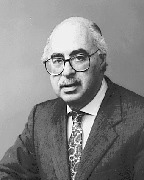One of the more intriguing parts of every comprehensive first party property program is equipment breakdown coverage. The successor to what was formerly known as insurance for "Boiler and Machinery," equipment breakdown coverage is designed to cover those risks that are specifically excluded by the all risk property form, the Form 1030. Thus, Form 1030 routinely excludes loss from electrical disturbances and mechanical breakdowns and these are the risks that equipment breakdown coverage is designed to cover. It can be extremely valuable where a lot of industrial machinery is utilized by the policyholder in its operations or even in real estate risks to cover potential problems in the heating, air conditioning and electrical systems..
Equipment breakdown coverage can be written in a variety of ways - as a "stand alone" policy or as an endorsement to the property form or integrated into the general personal property form. The coverage provisions are essentially the same: a covered cause of loss is defined as an "accident" further defined as a "fortuitous event that causes direct physical damage to 'covered equipment'."
However, the usual network of exclusions found in the equipment breakdown coverage can make this coverage problematical and provide an opening for the insurer to disclaim coverage. These exclusions are: wear and tear; rust; corrosion; decay; deterioration and how they interplay with a "breakdown" can conceivably cause problems. So the initial dispute usually involves whether or not the breakdown was an "accident."
Necessarily, one has to be acquainted with the insurance concepts of "causation" and the doctrine of efficient, proximate or dominant cause to counter insurance company arguments of no coverage. The insured has to track the chain of causation leading to the breakdown and fashion an argument centering on the breakdown as the dominant, efficient cause of the loss.
There is often a fine line between a maintenance issue involving "wear and tear," an excluded event, and a breakdown characterized as an "accident." That is usually the first hurdle to overcome with respect to coverage. Cf. New England Gas & Electric Association v. Ocean Accident and Guarantee Corp., 330 Mass. 640, 116 N.E.2d 671 (1953). You can rest assured that the insurer will bring to bear every exclusionary clause to counteract the insured's perception of an "accident". Since many breakdown losses are the result of a progressive decline in function, the insured must make the case that it is a "sudden and accidental" breakdown.
The adjusters for insurers who process equipment breakdown claims are schooled in the very technical aspects of the coverage and, consequently, the progress on claims can be very slow and ossified. The claims culture is very forbidding and adversarial and insurers are quick to seize on any technical vulnerability either in the coverage or the damage presentation.
Since the insurers have had a wide exposure to a variety of breakdowns over the years, they have accumulated an expansive stable of "experts" who they perceive have the skills and know how to restore and fix any breakdown. Often, the insurer will throw extraordinary amounts of money and expend timeless efforts to repair a machine that in the policyholder's eyes should be junked. However, since the coverage for equipment breakdowns is often written on a replacement cost basis, the cost to replace would be way in excess of any reasonable repair cost, the insurers invariably back away from declaring the equipment a total loss.
Thus, the second area of disagreement usually focuses on the issue of whether or not the equipment is a total loss or is repairable. I have seen insurers insist on repairing equipment for sums of money way in excess of what the equipment could be replaced for on the used equipment market. This is because the cost to replace the equipment with a new machine would be far in excess of the repair cost however extravagant. Concepts of "constructive total loss" are not that developed or accepted by courts on a widespread basis so as to constrain insurers in using this approach.
Business income coverage can also be written to tie into the equipment breakdown coverage so that the policyholder would have a full range of protection. One should also consider making any building code coverage applicable to the equipment breakdown coverage.
As with most property claims, persistence and patience are the necessary ingredients to bring equipment breakdown claims to a successful conclusion.
Marvin Milton, SPPA, is the senior vice president at Swerling Milton Winnick, Public Insurance Adjusters, Inc. Wellesley Hills, Mass.
Tags:
Managing your equipment breakdown claim - Which can be written in a variety of ways
February 24, 2011 - Spotlights









